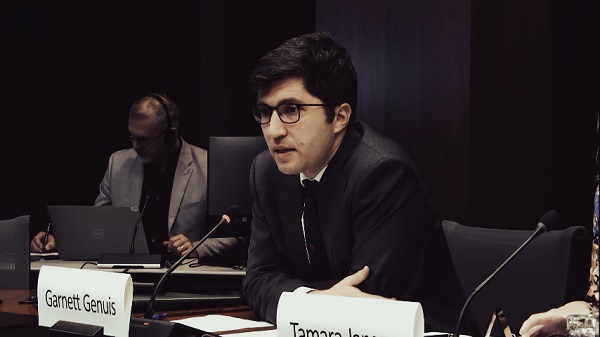Bruce Dowbiggin
How Betting Could Save Over-Expanded Leagues With Competition Problems
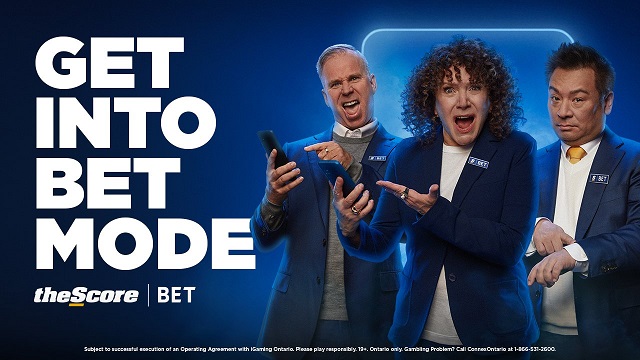
It’s not often that we get new traditions every day in the NHL playoffs. We’re used to octopus on the ice. Plastic rats, too. Ron Maclean using obscure Blue Rodeo lyrics to explain the icing rule. But now there is a new tradition, unlike another.
Bitching about betting ads during the broadcasts of games. Get any group of plus-50s fans together to talk about the playoffs and you’re guaranteed to hear a volley of complaints about the incursion of gambling commercials now peppering the HNIC playlist. Or, for that matter, the TBS hockey playlist in the U.S.
The grievances range from the interference in the play (“I just want to watch a game, not a pitch for the over/ under on Stu Skinner goals-against”) to corruption of youth (“We are teaching a generation of young people that gambling is okay”). Some are annoyed by the presence of Connor McDavid who has morphed from a punchline in Wayne Gretzky’s gambling resumé to a serious dude warning kids about responsible gambling.

The reliance on advertising from casinos and gambling sites is a swift jolt for sports broadcasters who clearly see a golden goose and are not going to let it get away. As we’ve said before, we have yet to have a signature funny commercial for gambling that takes it mainstream. Right now, in Canada particularly, the quality of ads is lame.
But. Let’s discuss the “corrupting youth” argument that seems to be the loudest voice from non-gamblers. As we discussed in the Shohei Ohtani case, gambling— in the form of betting, fantasy sports, office pools, pick-a-square etc.— has been a vast underground source of gambling that the abolitionists ignored for decades. Legalizing it has removed much of this action from the grip of organized crime. As Ohtani’s case showed, the sunlight of public betting allows for (mostly) better monitoring.
As well, the leagues don’t share in the betting revenues, removing any question about the integrity off the outcome. They do promote betting sites and casinos where betting takes place. But the earnings from that belongs to others, not the leagues.

Second, the generations of pecksniffs deploring these ads have watched ads for alcohol on sports broadcasts for decades. In case you’ve been on Mars, alcohol is highly addictive and a drain on society’s healthcare resources. Yet none of them made a puritanical peep about protecting youth from ads for beer that financed HNIC for 50 years. Consistency in this griping would be nice.
Third, there is a fundamental misunderstanding about gambling that most of the opponents miss. Yes, the money is staggering. It has brought to pro sports league revenues so they can pay NFL QBs $50 million a year. With the threat of regional cable broadcasting— and its revenues— collapsing in North America, a new source of profits is imperative.
It also favours the house. Winning 57-58 percent of your bets is considered excellent. But here’s something no one talks about. Recreational gambling is an answer to the problems created by bloated leagues of 30-plus teams. The chances of your favourite team winning the Stanley Cup or Super Bowl have shrunk to microscopic in most cases. As we pointed out in our 2021 book Cap In Hand, the pressure of salary caps has led organizations to adopt either a “we’ll go for it” stance for a “tank for a top pick” approach.

What used to be a healthy middle class in leagues— fifteenth place—is now a ghost town as teams either rise our fall accord to their title hopes. Trading deadlines midway through a season allow teams to dump big contracts or gather depth for a playoff run. By the end of the season the standings are a sandwich with no filling.
So how are broadcasters to maintain interest in lame squads losing at a prodigious rate? What do you say to keep fans coming back even when they know the inevitable result? Enter recreational gambling. The NFL has floated its boat on the power of pools, fantasy and illegal wagering for years. It knows its TV numbers would plummet without people tuning in to see how their fantasy teams, props bets and parlays are doing.
Allegiances to your bets are the coming thing in sports viewership. Not for nothing does ESPN— an NFL, NBA and NHL rights holder— feature a “Bad Beats” section on its sports desk coverage every night. It highlights the outcomes where winning and losing defies imagination. Canadian networks are still treating their betting tips as stand-alone segments, not incorporating a betting win/ loss segment. But with the Blue Jays and Raptors floundering they’ll need alternatives to recognizing the inevitable. Enter betting.
As well, the playoffs—usually a windfall for teams/ leagues—leave considerable inventory unrealized. Quick series make for diminished handles and lost ticket sales. For instance, in this year’s NHL playoffs, the losing team in the 14 series so far has averaged just 1.78 wins per series. The NBA is far worse. Losing teams in this year’s postseason are averaging just 1.2 wins per series.
It’s anticlimactic and predictable and expensive for leagues. So if you’re paying the kind of money the stars now command you have to get the secondary sources of revenue cranked up. That spells betting. Like it or not.
Bruce Dowbiggin @dowbboy is the editor of Not The Public Broadcaster A two-time winner of the Gemini Award as Canada’s top television sports broadcaster, he’s a regular contributor to Sirius XM Canada Talks Ch. 167. His new book Deal With It: The Trades That Stunned The NHL And Changed hockey is now available on Amazon. Inexact Science: The Six Most Compelling Draft Years In NHL History, his previous book with his son Evan, was voted the seventh-best professional hockey book of all time by bookauthority.org . His 2004 book Money Players was voted sixth best on the same list, and is available via brucedowbigginbooks.ca.
Bruce Dowbiggin
While America Shrugs Off Woke, Canada Doubles Down On Feminizing Society

There is a truism that politicians believe that strategy wins battles. Generals know that logistics win battles. Translation: You can have all the shiny new weapons but if you don’t have a delivery system to support them you’re going to lose.
The success of the Woke Left this past generation has been its creation of delivery systems in the media and culture to carry out their agenda. The result: a feminization of Western culture, exemplified by the manic hatred of 1980s alpha man Donald Trump. From their modest demand for “safe spaces” they now have rendered all criticism of social dysphoria as hate speech and the speakers criminal. Murder in the service of trans— suggested by Jane Fonda— is considered holy.
Writes conservative political analyst Helen Andrews.. “Everything you think of as wokeness involves prioritizing the feminine over the masculine: empathy over rationality, safety over risk, cohesion over competition… The most important sex difference in group dynamics is attitude to conflict. In short, men wage conflict openly while women covertly undermine or ostracize their enemies.” Translation: If it feels good it must be correct.
As we noted in June emotional narratives now override facts in public discourse. The currency in this societal change has been victimization as the badge of virtue. Young women, in particular, are willing to believe even the most outlandish claims of victimization in exchange for credibility in the Woke camp. One example from the past week’s No Kings performative marches example: Women are being ignored in media or being discriminated against in hiring or academia. As if.

No Kings had all the hallmarks of the victim strategy. A predominately female, plus-60 audience and their handlers from the education system, all united in loathing Donald Trump. The shared distress brought on by POTUS 47. A Hollywood component led by Kathy Griffin.
So, after all the bonding and talking, what message did they take away from the large crowds and media love? Was it empathy or rationality? As Andrews writes, “The outcome of a discussion is less important than the fact that a discussion was held and everyone participated in it.” Besides a few pathetic folk songs, badly written signs, cheeky assassination memes they mostly took away a feeling of unity. It was, like Stalin’s Soviet Union army parades, a display of the delivery systems they’ll use to enforce loyalty in the future.
For organizers who know they’re not going to get rid of POTUS 45/ 47 anytime soon, there was the added confidence that this base will fall obediently in line when the nomenklatura call them to do their bidding— the same way they did on lockdowns, vaccines and pussy hats.
The problem for the Left’s leaders after all the Charlie Kirk references and Pete Seeger nostalgia is that the delivery system is still struggling to find a new wedge weapon to slow down Trump. (He’s still polling in the high 40s approval with pollsters who correctly called 2024.) All the Congressional shutdowns, Epstein references and Putin references that worked before are now failing.
“CNN: This shutdown is a different world for Trump than the 2018-19 shutdown. He’s in a much better spot. Here is his Shutdown Trump Net Approval
Blame Trump for Shutdown:
2019: yes 61%
2025: no 48%
Worse, support for critical issues such as trans is falling. Canadian political scientist Andrew Kaufman shocked progressives with polling showing that trans identification is in free-fall among the young the past five years. So is nonbinary identity. (Pretty soon only their demented parents will buy the grift.)
As well, Congressional district adjustments could give the GOP as many as 20 new seats in the midterm. Hence the broad hints at violent civil unrest from the more excited paraders this weekend. And the disingenuous claims of how peaceful the Left was on the weekend. In short it was No Kings. No New Ideas.
While America roils in the dynamics of a Woke retreat, Kaufman points out that Canada remains entirely in the thrall of the feminized morality introduced by Justin Trudeau’s election ten years ago this month in 2015. “Liberals: Stop importing US politics into Canada. Also Liberals: Hey look, the U.S is holding a ‘No Kings’ protest. Let do it too.”
The image of the hip, sexually ambiguous Trudeau has been followed by the feminized Mark Carney with his trans child. The symbolism is no accident. The Canadian Left’s rock/ paper/ scissors emotion now trumps irrationality. Canadians questioning dysphoria or promoting traditional male roles is now punishable by firing or banishment from social media. Emotional blackmail is a delivery system for Canada’s left. But it only goes one way. If you act like a traditionsl man publicly (see: Danielle Smith) your female cloak of supremacy loses its superpowers.

While the U.S. Left struggles the political delivery system Canada is, by contrast, armed to the teeth with live feminist ammo aimed at Pierre Poilievre. Somehow the meek bureaucrat from Ottawa is painted as mini-Trump by the heavy hitters of the Left. The past week saw the titans of the keyboards twist anti PP comments from a former Stephen Harper aide into an attack from the former PM. It took hours before Harper’s office quashed the implications of Polievre hate, too late to expunge the scars.
Elbows Up aficiandos took their shots, too: “Here’s a sample: @PierrePoilievre has desecrated the memory of my father and insulted every officer who has served in the RCMP. This cannot be forgiven or forgotten.” This after Poilievre asked why it was not an issue that a fired Minister of Justice, Jody Wilson Raybould, was not allowed to ask why Skippy didn’t want the RCMP to do their job. This was 14 times she was told to stand down on issues over Trudeau’s donors.
To forestall any rejection of Woke, Carney’s strategy is to turn Canada in the direction of ultra-liberal Europe and away from Trumpland. But the logistics of a crumbling economy and separation on several fronts in Canada may take the decision out of his hands.
Bruce Dowbiggin @dowbboy is the editor of Not The Public Broadcaster A two-time winner of the Gemini Award as Canada’s top television sports broadcaster, his new book Deal With It: The Trades That Stunned The NHL And Changed hockey is now available on Amazon. Inexact Science: The Six Most Compelling Draft Years In NHL History, his previous book with his son Evan, was voted the seventh-best professional hockey book of all time by bookauthority.org . His 2004 book Money Players was voted sixth best on the same list, and is available via brucedowbigginbooks.ca.
Bruce Dowbiggin
Is The Latest Tiger Woods’ Injury Also A Death Knell For PGA Champions Golf?
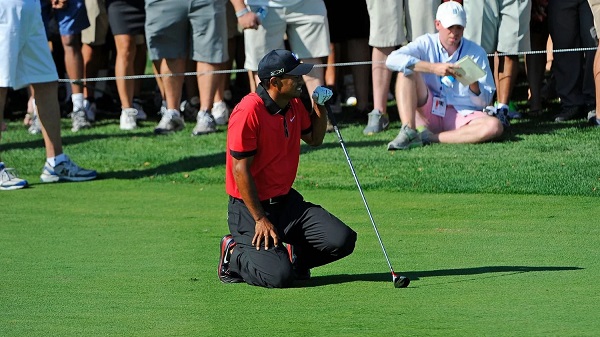
Tiger Woods should put an operating theatre in his Florida mansion on Jupiter Island. Woods has had a seventh surgery on his back. This time it’s to install a lumbar-disc replacement to address issues caused by a collapsed disc in his lower back. He’s expressing optimism that he could come back to play again, but there is no timeline.
The 15-time Major winner has always said he’ll never be a ceremonial golfer. So unless this surgery works miracles we have seen the last of him playing at golf’s top events. Says former PGA Tour player Johnson Wagner, “I just don’t see a world where we see him play in The Masters again — and that makes me very sad. I think his body is just beaten down, and I don’t think he can do it anymore.”
Since his days dominating the Tour ended Woods had expressed hope that he might add one more major— The U.S. Senior Championships— to his haul of 82 tournament wins. That seems a distant hope now as the 49-year-old looks unlikely to play in 2026 or 2027.
It’s also bad news for the PGA’s Champions Tour, where +50 former stars of the main Tour have extended their careers and made more prize money (Calgary hosts the Canadian stop.) The dream of what used to be called the Seniors Tour was to extend the visibility of the game’s drawing cards.
In the years after 1980, when the Seniors was established, the Tour did just that with star players such Tom Watson, Lee Trevino, Hale Irwin and Chi-Chi Rodriguez active. Along the way Fred Couples, John Daly, Ernie Els and more also won tournaments on the North American tour. Some used it to stay sharp for the U.S. and British Senior Opens. Others just enjoyed extending their careers while doing a little fishing.

But the great hope was that Woods and Phil Mickelson would highlight the Tour once their days on the regular Tour were done. Mickelson, however, has aligned himself with the rival LIV Tour, forgoing the PGA Champions.. That left Woods, the TV ratings magnet, to be the marquee attraction for the Tour. But that seems a faint hope now with this latest surgery. And the vast amount of money he’s already accumulated pounding these aging golfers into the turf.
Which has many in the know now suggesting the PGA Tour might just fold the Champions for good. While charisma-challenged Bernhard Langer has dominated the money-winners list well into his 60s, the star power of marquee names from the 1980s, ‘90s and 2000s has been sparse. Els, Retief Goosen, Stewart Cink and Padraig Harrington still compete and win. But a steady diet of Steve Alker, Richard Bland, Ken Tanigawa and Canada’s Stephen Ames leaves the viewing audience cold.

So could the Champions be reduced or eliminated? Without the promise of Woods teeing it up the future looks bleak. Nothing that happens in professional golf these days should surprise anyone, however. Since the arrival of the Saudi-sponsored LIV Tour stole a generation of stars such as Jon Rahm, Dustin Johnson, Brooks Koepka and Bryson DeChambeau the viewing public is baffled by what was traditionally a very stable lineup of tournaments from January through September.
There have been active negotiations the last two years between the LIV Tour and what remains of the PGA Tour, spearheaded by Rory McIlroy,. But so far no one has come up with a solution that puts golf’s Humpty Dumpty back together again. LIV has proven it can outspend the Tour if it comes to a spending contest so waiting for bankruptcy to return the LIV players to the PGA is a non-starter.
Fans are naturally disappointed and confused about the shifting picture. But as the rowdy Ryder Cup at NYC’s Beth Page Black demonstrated the sport can still command centre stage— even against an NFL weekend of games. The winning Europeans were demonized by hecklers and boors, adding a frisson of danger to the event.
It was must-see TV, even if it was rude. The geopolitical conflict reminded sponsors and networks of the potential for golf to once again capture the imagination of a global sports audience. If it just finds the right format.
Then there’s the Happy Gilmore factor. Adam Sandler’s second installment of the comedy series was a huge hit for Netflix with its blend of juvenile humour, celebrity cameos, golf greats, Bad Bunny and a flimsy plot about a futuristic tour involving Haley Joel Osment and supercharged golf course. Not much made sense beyond the appeal of golf. But non-golfers watched. (Owen Wilson’s series Stick has also been good story for golf.)
The plot inclusion of a rival league is a light-hearted jab at LIV— but also at the new TGL indoor competition that started last winter in Palm Beach Gardens, Florida. Fronted by Woods and featuring a number of current stars playing for various cities it has mechanical greens that rotate to mimic a real course and simulated holes on golf simulator.
Its biggest drawback is that the personalities of the Arnie/ Jack era half a century ago are largely missing from the men now dominating golf. Scotty Scheffler is affable. Tommy Fleetwood is modest. Justin Thomas has the charisma of a CPA. What the product needs are more Dalys and Shane Lowrys. But the fantastic purses they’ve earned have dulled the edge of golf’s legends post WW II.
For now, Woods will rehab, the sponsors will hold their breath and the audience will nod off on the couch till something reminds them of what they used to love.
Bruce Dowbiggin @dowbboy is the editor of Not The Public Broadcaster A two-time winner of the Gemini Award as Canada’s top television sports broadcaster, his new book Deal With It: The Trades That Stunned The NHL And Changed hockey is now available on Amazon. Inexact Science: The Six Most Compelling Draft Years In NHL History, his previous book with his son Evan, was voted the seventh-best professional hockey book of all time by bookauthority.org . His 2004 book Money Players was voted sixth best on the same list, and is available via brucedowbigginbooks.ca.
-

 Health2 days ago
Health2 days agoFor Anyone Planning on Getting or Mandating Others to Get an Influenza Vaccine (Flu Shot)
-

 Sports2 days ago
Sports2 days ago‘We Follow The Money’: Kash Patel Says Alleged NBA Ties To Mafia Just ‘The Start’ Of FBI Investigation
-
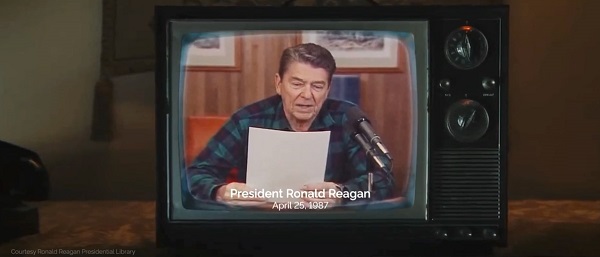
 Business2 days ago
Business2 days ago‘TERMINATED’: Trump Ends Trade Talks With Canada Over Premier Ford’s Ronald Reagan Ad Against Tariffs
-
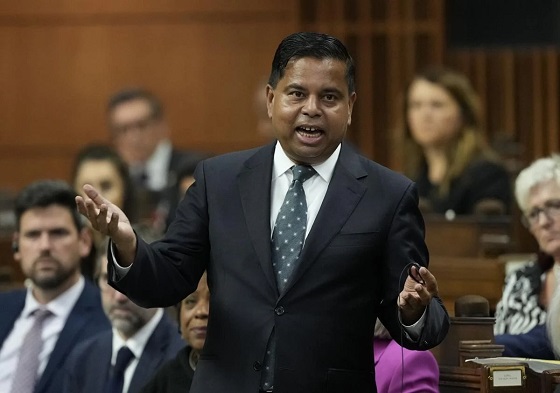
 Business2 days ago
Business2 days agoLiberals backtrack on bill banning large cash gifts, allowing police to search Canadians’ mail
-
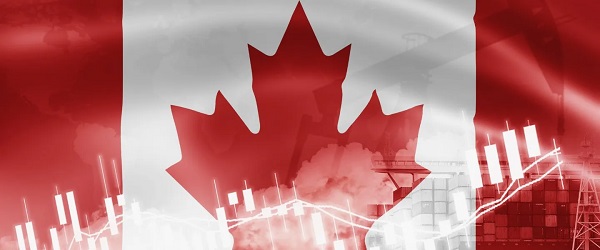
 Business13 hours ago
Business13 hours agoCarney government risks fiscal crisis of its own making
-

 Alberta13 hours ago
Alberta13 hours agoB.C. would benefit from new pipeline but bad policy stands in the way
-

 Business2 days ago
Business2 days agoA Middle Finger to Carney’s Elbows Up
-
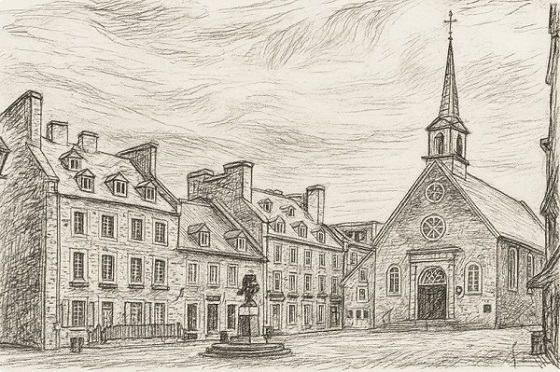
 Frontier Centre for Public Policy14 hours ago
Frontier Centre for Public Policy14 hours agoChurches Are All That Stands Between Canada And Tyranny

